K+ Efflux Antiporters 4, 5, and 6 Mediate pH and K+ Homeostasis in Endomembrane Compartments
- PMID: 30309966
- PMCID: PMC6288736
- DOI: 10.1104/pp.18.01053
K+ Efflux Antiporters 4, 5, and 6 Mediate pH and K+ Homeostasis in Endomembrane Compartments
Abstract
KEA4, KEA5, and KEA6 are members of the Arabidopsis (Arabidopsis thaliana) K+ efflux antiporter (KEA) family that share high sequence similarity but whose function remains unknown. Here, we show their gene expression pattern, subcellular localization, and physiological function in Arabidopsis. KEA4, KEA5, and KEA6 had similar tissue expression patterns, and the three KEA proteins localized to the Golgi, the trans-Golgi network, and the prevacuolar compartment/multivesicular bodies, suggesting overlapping roles of these proteins in the endomembrane system. Phenotypic analyses of single, double, and triple mutants confirmed functional redundancy. The triple mutant kea4 kea5 kea6 had small rosettes, short seedlings, and was sensitive to low K+ availability and to the sodicity imposed by high salinity. Also, the kea4 kea5 kea6 mutant plants had a reduced luminal pH in the Golgi, trans-Golgi network, prevacuolar compartment, and vacuole, in accordance with the K/H exchange activity of KEA proteins. Genetic analysis indicated that KEA4, KEA5, and KEA6 as well as endosomal Na+/H+exchanger5 (NHX5) and NHX6 acted coordinately to facilitate endosomal pH homeostasis and salt tolerance. Neither cancelling nor overexpressing the vacuolar antiporters NHX1 and NHX2 in the kea4 kea5 kea6 mutant background altered the salt-sensitive phenotype. The NHX1 and NHX2 proteins in the kea4 kea5 kea6 mutant background could not suppress the acidity of the endomembrane system but brought the vacuolar pH close to wild-type values. Together, these data signify that KEA4, KEA5, and KEA6 are endosomal K+ transporters functioning in maintaining pH and ion homeostasis in the endomembrane network.
© 2018 American Society of Plant Biologists. All rights reserved.
Figures
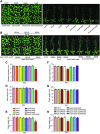
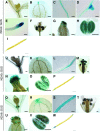
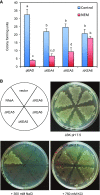

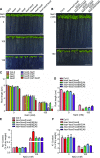




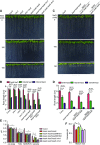
Similar articles
-
Golgi-localized cation/proton exchangers regulate ionic homeostasis and skotomorphogenesis in Arabidopsis.Plant Cell Environ. 2019 Feb;42(2):673-687. doi: 10.1111/pce.13452. Epub 2018 Nov 25. Plant Cell Environ. 2019. PMID: 30255504
-
Evidence for potassium transport activity of Arabidopsis KEA1-KEA6.Sci Rep. 2019 Jul 11;9(1):10040. doi: 10.1038/s41598-019-46463-7. Sci Rep. 2019. PMID: 31296940 Free PMC article.
-
The Arabidopsis intracellular Na+/H+ antiporters NHX5 and NHX6 are endosome associated and necessary for plant growth and development.Plant Cell. 2011 Jan;23(1):224-39. doi: 10.1105/tpc.110.079426. Epub 2011 Jan 28. Plant Cell. 2011. PMID: 21278129 Free PMC article.
-
Plant Endomembrane Dynamics: Studies of K+/H+ Antiporters Provide Insights on the Effects of pH and Ion Homeostasis.Plant Physiol. 2018 Jul;177(3):875-895. doi: 10.1104/pp.18.00142. Epub 2018 Apr 24. Plant Physiol. 2018. PMID: 29691301 Free PMC article. Review.
-
Recent advances in plant endomembrane research and new microscopical techniques.New Phytol. 2023 Oct;240(1):41-60. doi: 10.1111/nph.19134. Epub 2023 Jul 28. New Phytol. 2023. PMID: 37507353 Review.
Cited by
-
Computational analysis and expression profiling of potassium transport-related gene families in mango (Mangifera indica) indicate their role in stress response and fruit development.Front Plant Sci. 2023 Jan 23;13:1102201. doi: 10.3389/fpls.2022.1102201. eCollection 2022. Front Plant Sci. 2023. PMID: 36756234 Free PMC article.
-
Genome-Wide Identification of the Cation/Proton Antiporter (CPA) Gene Family and Expression Pattern Analysis Under Salt Stress in Winter Rapeseed (Brassica rapa L.).Int J Mol Sci. 2025 Mar 27;26(7):3099. doi: 10.3390/ijms26073099. Int J Mol Sci. 2025. PMID: 40243728 Free PMC article.
-
Involvement of ethylene receptors in the salt tolerance response of Cucurbita pepo.Hortic Res. 2021 Apr 1;8(1):73. doi: 10.1038/s41438-021-00508-z. Hortic Res. 2021. PMID: 33790231 Free PMC article.
-
ß-COP mutants show specific high sensitivity to chloride ions.Plant Signal Behav. 2021 Mar 4;16(3):1858629. doi: 10.1080/15592324.2020.1858629. Epub 2021 Jan 12. Plant Signal Behav. 2021. PMID: 33432878 Free PMC article.
-
Potassium Control of Plant Functions: Ecological and Agricultural Implications.Plants (Basel). 2021 Feb 23;10(2):419. doi: 10.3390/plants10020419. Plants (Basel). 2021. PMID: 33672415 Free PMC article.
References
-
- Apse MP, Aharon GS, Snedden WA, Blumwald E (1999) Salt tolerance conferred by overexpression of a vacuolar Na+/H+ antiport in Arabidopsis. Science 285: 1256–1258 - PubMed
-
- Apse MP, Sottosanto JB, Blumwald E (2003) Vacuolar cation/H+ exchange, ion homeostasis, and leaf development are altered in a T-DNA insertional mutant of AtNHX1, the Arabidopsis vacuolar Na+/H+ antiporter. Plant J 36: 229–239 - PubMed
-
- Aranda-Sicilia MN, Cagnac O, Chanroj S, Sze H, Rodríguez-Rosales MP, Venema K (2012) Arabidopsis KEA2, a homolog of bacterial KefC, encodes a K+/H+ antiporter with a chloroplast transit peptide. Biochim Biophys Acta 1818: 2362–2371 - PubMed
Publication types
MeSH terms
Substances
LinkOut - more resources
Full Text Sources
Medical
Molecular Biology Databases

